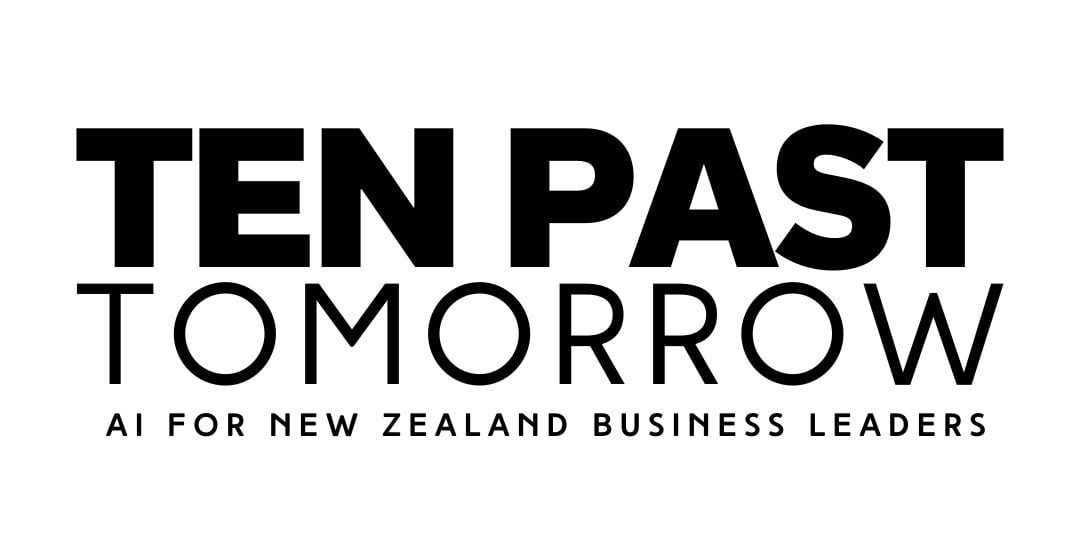Why every employee you have is now an AI innovator
More and more, I'm finding that AI discussions fall at either end of a weird dichotomy.
AI commentary is increasingly either utopian hype, or else the age of the machine overlords is imminent.
I don't think this polarised view reflects the nuanced reality we're facing.
The truth is, AI's capabilities are as diverse as they are evolving. In some areas, AI outperforms human experts amazingly well, while in others, it stumbles over tasks a child could handle with ease.
Rather than making sweeping (polarising) generalisations, lets crunch in on specifics...
What we do know is that current LLM technology, even without further refinement, serves as a powerful collaborative tool. It's enhancing human performance across various domains - from sparking innovation to boosting productivity and streamlining coding processes. Yet, we're still in the early stages of mapping out its full range of strengths and limitations.
The initial phase of AI adoption, (by individual users), has so far been a huge success, with some of the fastest adoption rates in history for a new technology. ChatGPT was the fastest app to get to 100 million users. In 2 months.
But the second phase, rolling out effective company-wide AI adoption and usage, is going to involve climbing the mountain of organisational and cultural change.
Likely quite slowly.
Sometimes one step up, and then two steps back.
Cultural adaptation to AI is where the true challenge of the tech lies. I like to summarise this by saying that “AI is not a technical challenge, it’s a cultural one.”
The surprising ease of AI adoption
From my experience working with diverse groups, I've noticed something remarkable about AI adoption.
Most people, even those who've never dabbled in AI before, can become impressively proficient users in a surprisingly short time.
With just 10 hours of focused training, I'm confident I could equip most individuals with the skills to dramatically enhance their job performance using AI tools.
The real hurdle lies in managing the broader organisational changes that AI inevitably triggers.
I'm talking about fundamental shifts in roles, departmental structures, and even entire business models. This cultural evolution is where the true test of AI integration lies, and it's a process that will unfold over a much longer timeframe than the rapid individual adoption we've witnessed.
Yet, it's exactly this cultural adaptation that holds the key to unlocking significant company-wide productivity gains.
In my conversations with numerous companies over the past couple of years, I've noticed a concerning trend. Many are falling into the trap of viewing AI primarily through the lens of cost reduction. This shortsighted approach reminds me of another transformative technology from our past: electricity.
Lessons from the electric revolution
When electricity first burst onto the scene, many saw it merely as a replacement for gas lamps and candles (or so I've read).
But the real revolution came when innovators harnessed electricity to power new inventions like electric motors, reshaping industries from manufacturing to transportation and communication.
Today, we're at risk of making a similar mistake with AI. Too many leaders are fixated on AI as just a tool for efficiency gains and immediate cost savings. They're eager to trim staff numbers at the first sign of AI-driven productivity increases, without fully exploring how AI could expand their business horizons.
Imagine if the early adopters of electricity had limited their vision to simply lighting the factories and offices of their workforce in new ways, rather than dreaming up new possibilities for their products and services that electricity could enable.
Similarly, the companies that will lead the charge in the AI era will be those that see beyond mere efficiency, using AI as a springboard for innovation and expansion.
 "Greg, your AI innovation is sticking out of your forehead."
"Greg, your AI innovation is sticking out of your forehead."
Navigating uncharted AI territory
At present, there's no universal roadmap for leveraging AI to unearth new opportunities across different industries.
Even the leading AI consultants and cutting-edge software vendors are still finding their feet in this new landscape.
Companies that rush to implement AI roadmaps that simply replicate what traditional software deployment roadmaps look like (centralised, and one-size-fits-all) risk missing out on the true potential of this technology.
The key is to first develop a deep understanding within every single one of your employees of how AI can add value to their specific context, and the context of your company at large.
This understanding shouldn't/can't/doesn't just come from the top down - it emerges from the ground up, through hands-on experimentation and discovery.
That's why every company needs to embrace a culture of "employee-infused R&D" when it comes to AI.
Unlike traditional software, AI doesn't operate on predetermined rules and processes. Its potential applications are as diverse as the human minds that interact with it. This means that your IT department (a common department to be lumped with "doing AI for the company"), despite their technical expertise, may not be best placed to identify the most impactful uses of AI within your organisation.
While IT plays a crucial role in implementation and security, the real breakthroughs in AI utilisation will come from your frontline workers and managers.
These are the people who intimately understand the challenges and opportunities in their respective areas.
For large companies especially, the competitive edge in AI will stem from tapping into the expertise of their employees, who can unlock the hidden capabilities of AI in ways that align with your specific business needs.
The concept of "hidden capabilities" in AI
Large Language Models are like vast, imperfect encyclopaedias. They contain an enormous breadth of knowledge, but their understanding can be patchy or inconsistent.
Despite the unknowns, we're continually surprised by the areas where AI shows remarkable proficiency.
For instance, in medical diagnoses, AI systems have demonstrated accuracy that rivals or even surpasses many human doctors. They've also shown an unexpected aptitude for providing empathetic responses to patients, opening up new possibilities in healthcare communication.
Unlocking these hidden AI capabilities is where your team's expertise becomes invaluable.
I like to call them your "everyday experts" - the employees who have built up deep knowledge and skills in their specific domains through years of hands-on experience.
These everyday experts have a unique advantage when it comes to AI.
They can quickly discern whether AI-generated output in their field is spot-on or way off base. Their domain knowledge allows them to see through potential errors or "hallucinations" in AI responses. They're also best positioned to guide the AI effectively, asking the right questions and providing the necessary context to get useful results.
Moreover, these experts have ample opportunities for trial and error in their daily work, allowing them to fine-tune their use of AI tools over time. This iterative process is key to uncovering and leveraging the hidden capabilities of AI in ways that others simply couldn't.
Another advantage of relying on your everyday experts is that it allows for a more organic, bottom-up approach to AI integration.
Instead of starting with complex, centralised AI solutions, employees can begin with simple prompts in user-friendly tools like ChatGPT, Google Gemini, or Claude. As they push the boundaries of what these tools can do, they'll naturally discover where more advanced, custom solutions might be needed.
Unlocking hidden capabilities for all
For AI to truly transform your organisation, it's not enough for individual experts to discover its potential in isolation - their discoveries and knowledge need to be shared widely. Success will come from fostering a culture where employees are encouraged to experiment with AI and share their lessons with colleagues across the organisation.
This means companies need to find ways to incentivise and empower their workforce to explore AI's potential and share their discoveries. It's not an easy task - there are often numerous barriers in place, from office politics to legal concerns and budget constraints. However, for organisations that manage to create this culture of shared learning and experimentation, the rewards can be substantial.
For most businesses, uncovering and sharing these hidden AI capabilities should be a top priority in the coming years. It's not just about reaping the benefits of AI - it's also about understanding and mitigating potential risks. This requires your "everyday experts" to develop a nuanced understanding of when and how to best utilise AI tools.
We're all in this together, because there's no outside authority with all the answers.
Even the creators of these AI systems are still uncovering new applications and limitations of their creations.
While we can't ignore the fact that there are serious and numerous risks, concerns and challenges involved in AI adoption, we can't let that paralyse us.
Our focus should be on working diligently to not only mitigate potential harm but also to discover positive applications that can help humanity thrive in this new AI-augmented world.
The journey of AI integration is just beginning, and the path forward will be shaped by the collective efforts and shared insights of our "everyday experts".
By creating a culture of open experimentation and knowledge sharing, we can unlock the true potential of AI in ways that benefit us all.
After all, in the world of AI, everyone is an innovator.
- - -
This article was significantly influenced by (the always brilliant) Ethan Mollick's recent blog post (here) on "latent expertise in AI adoption". His insights on the role of all employees having an important R&D function in finding AI's potential really shaped my perspectives on this topic. His article really helped me unlock and translate some of my own thoughts in ways that didn't quite have form and structure before I had read it.






